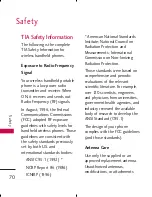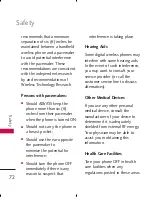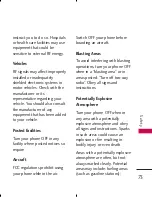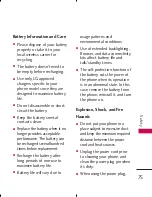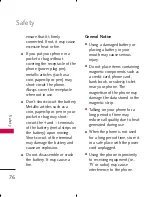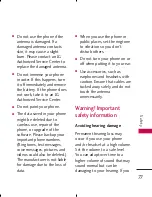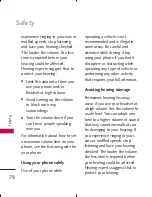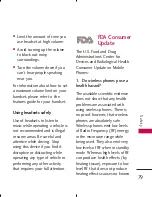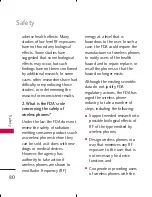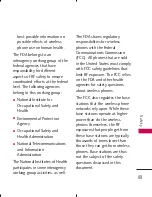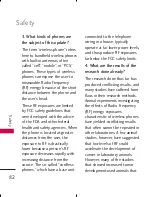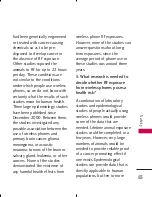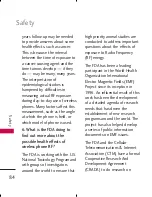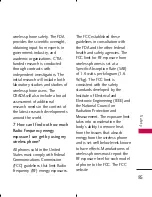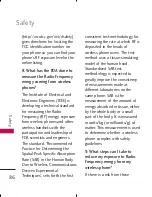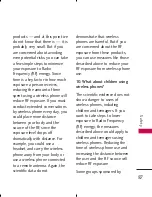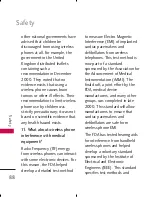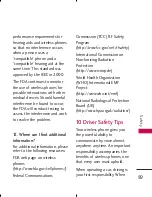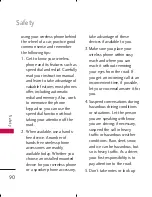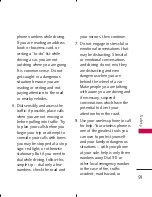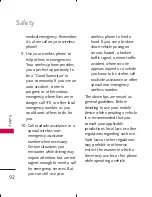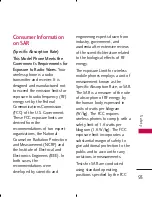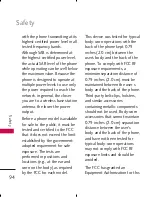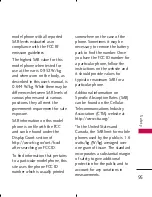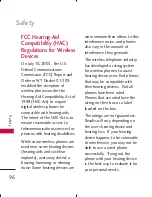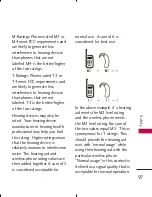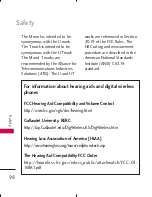
years follow-up may be needed
to provide answers about some
health effects, such as cancer.
This is because the interval
between the time of exposure to
a cancer-causing agent and the
time tumors develop — if they
do — may be many, many years.
The interpretation of
epidemiological studies is
hampered by difficulties in
measuring actual RF exposure
during day-to-day use of wireless
phones. Many factors affect this
measurement, such as the angle
at which the phone is held, or
which model of phone is used.
6. What is the FDA doing to
find out more about the
possible health effects of
wireless phone RF?
The FDA is working with the U.S.
National Toxicology Program and
with groups of investigators
around the world to ensure that
high priority animal studies are
conducted to address important
questions about the effects of
exposure to Radio Frequency
(RF) energy.
The FDA has been a leading
participant in the World Health
Organization International
Electro Magnetic Fields (EMF)
Project since its inception in
1996. An influential result of this
work has been the development
of a detailed agenda of research
needs that has driven the
establishment of new research
programs around the world. The
project has also helped develop
a series of public information
documents on EMF issues.
The FDA and the Cellular
Telecommunications & Internet
Association (CTIA) have a formal
Cooperative Research And
Development Agreement
(CRADA) to do research on
Safety
84
Safe
ty
UX300_Eng_080513.qxd 2008.7.15 1:18 PM Page 84

